What is gene therapy?
Image credit: Science Photo Library
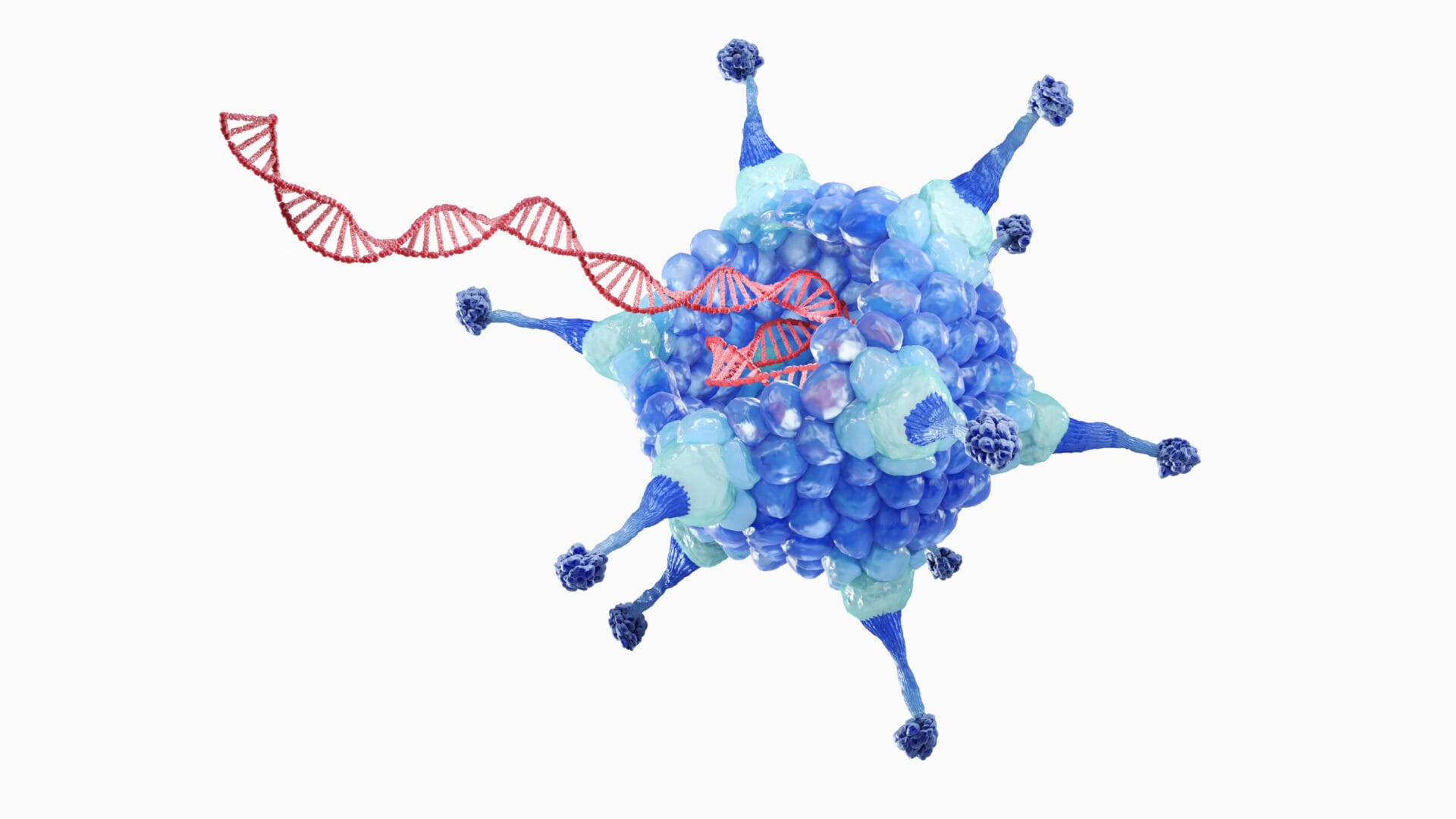
Gene therapy is when DNA is introduced into a patient to treat a genetic disease. The new DNA usually contains a functioning gene to modify the effect of a mutated gene that’s causing a disease.
Key terms
DNA
(deoxyribonucleic acid) A molecule that carries the genetic information necessary to build and maintain an organism.
Gene
A section of DNA within a genome that carries a specific set of information - often the information needed to make a protein.
Protein
A large molecule made from chains of amino acids, which perform an array of functions with a cell or organism.
Mutation
A change in the DNA sequence, which may have positive, negative or neutral effects on the organism.
- Gene therapy uses sections of carefully selected DNA to treat or prevent disease that is caused by a faulty gene.
- The technique was first developed in 1972 and has been successful in treating a small selection of conditions. However, if we can overcome key challenges, it may become a more promising option for more genetic conditions, including muscular dystrophy and cystic fibrosis.
What is gene therapy?
- Gene therapy uses sections of DNA to prevent or treat disease that’s been caused by a mutated gene.
- There are two different types of gene therapy depending on which types of cells are treated:
- Somatic gene therapy: the DNA is transferred to any cell of the body that doesn’t produce sperm or eggs. Effects of gene therapy will not be passed onto the patient’s children.
- Germline gene therapy: the DNA is transferred to cells that produce eggs or sperm. Effects of gene therapy may be passed onto the patient’s children and subsequent generations.
The main types of gene therapy include:
- This technique is used for ‘loss of function’ conditions, caused by a mutation that stops a gene from producing its functioning product, such as a protein.
- The technique works by adding the gene without the mutation into the cell, so the cell can make the functioning product at the right levels.
- For example, metachromatic leukodystrophy (MLD) is a rare condition caused by mutations in the ARSA gene, leading to a progressive loss of function of the brain and nervous system.
- In 2023, the first child in the UK received life-saving gene therapy for MLD, introducing a functional copy of the gene so that the body could make the protein coded by the ARSA gene. The therapy is only effective if the effects of the condition are reversible or have not resulted in lasting damage to the body.
- Augmentation therapy is also being explored for cystic fibrosis, which is caused by a mutation in the CFTR gene, leading to a faulty CFTR protein and affecting lung function.
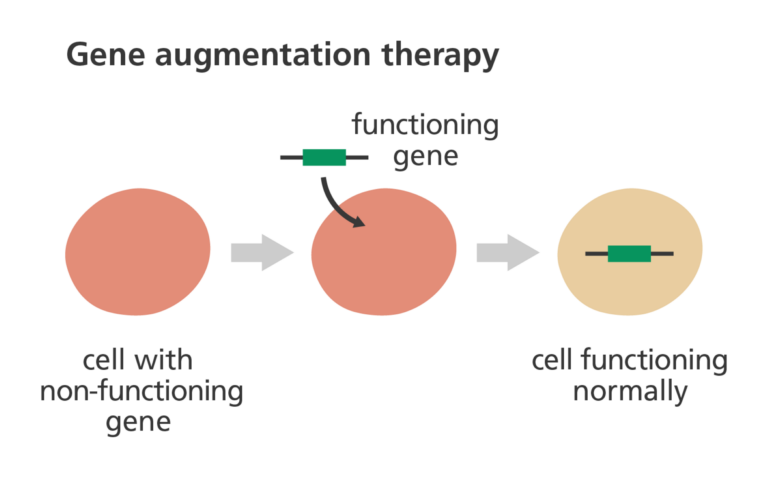
Gene augmentation therapy to correct the effect of a mutated gene
- This technique is suitable when a gene is behaving inappropriately.
- The technique works by introducing a new gene whose product either interferes with the overactive gene or interferes with the product of the overactive gene.
- For example, a mutation can cause some genes to be overactive, which can cause a cell to divide uncontrollably and lead to the development of cancer.
- In cancer, this technique can stop overactive genes from fuelling the cancer and make a cell function normally again.
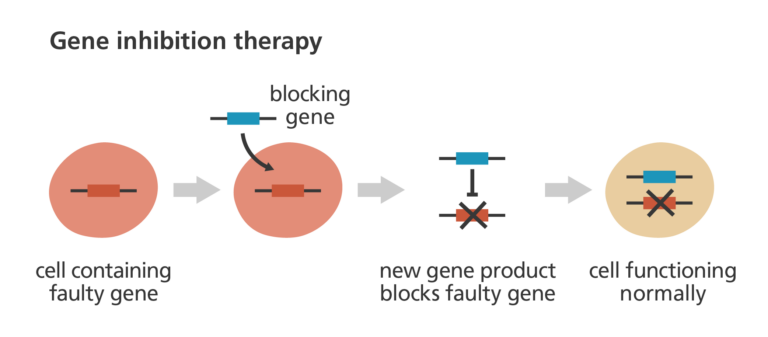
Gene inhibition therapy to stop the function of a faulty gene
- This technique is suitable for diseases that can be treated by destroying certain groups of cells, such as cancer.
- It works by inserting DNA into a diseased cell that causes that cell to die, either by:
- Producing a highly toxic product that can trigger cell death in a controlled way, through a process called apoptosis, or
- Producing a product that alerts the diseased cell to the immune system, which then destroys the cell. This is sometimes called immunotherapy.
- It is essential that the inserted DNA is targeted to the correct cells, to avoid killing cells that are functioning normally.
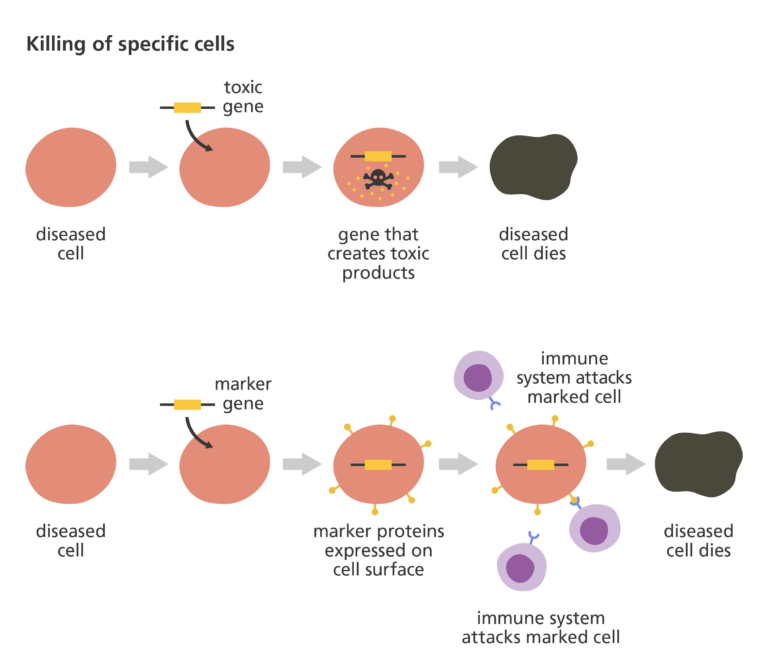
Killing of specific cells that are behaving differently due to a mutated gene
How is DNA inserted into a cell for gene therapy?
- A section of DNA or gene of interest is packaged within a vector – such as a ring of DNA called a plasmid. This is the vehicle that carries the DNA into the cell.
- Once inside the correct cell, the DNA is expressed by the cell’s normal machinery, leading to production of the therapeutic protein and treatment of the patient’s disease.
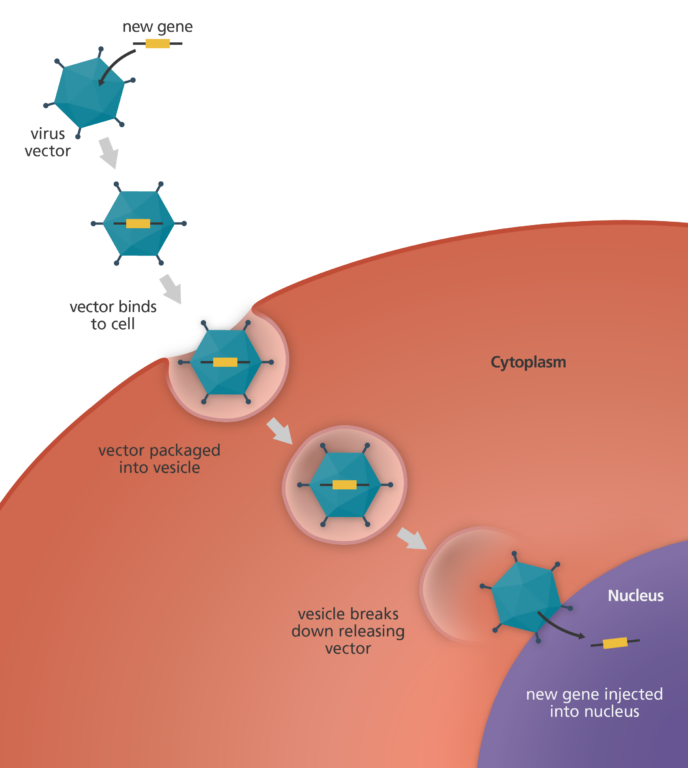
What are the challenges of gene therapy?
Gene therapy holds the potential to treat many genetic conditions – but to reach its potential, we must overcome challenges, including:
- Delivery: for the treatment to work, the gene must reach the right cell. If it enters the wrong cell, this could be dangerous to the patient.
- Switching the gene on: cells can obstruct this process by shutting down genes that are behaving unusually.
- Avoiding the immune system: the immune system might see the gene therapy as an intruder and spark a potentially dangerous immune response, like a severe allergic reaction. This can be overcome with vectors that are less likely to be noticed by the immune system.
- Making sure the new gene doesn’t disrupt other genes: if a gene therapy inserts itself into the path of another gene, it could affect the way the cell works and lead to further problems. Ideally, the new gene integrates itself into the genome, which continues to work seamlessly for the rest of their lives.
- Cost: many genetic conditions are extremely rare and gene therapy often requires a case-by-case approach. While effective, this can also be very expensive.